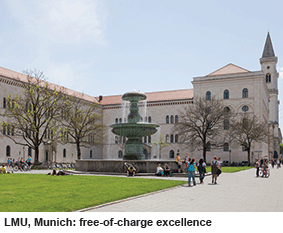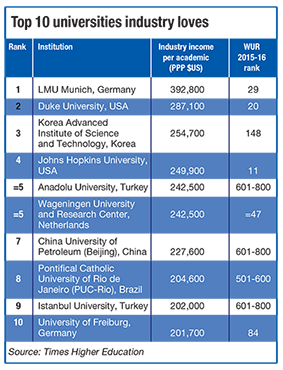 When US presidential hopeful Bernie Sanders painted a picture of the perfect model of higher education, he didn’t reference Harvard, Yale or Stanford; instead he cited universities in Germany and Scandinavia. He held up their education systems as ones the US should emulate when pledging to make tuition free at public colleges and universities last year.
When US presidential hopeful Bernie Sanders painted a picture of the perfect model of higher education, he didn’t reference Harvard, Yale or Stanford; instead he cited universities in Germany and Scandinavia. He held up their education systems as ones the US should emulate when pledging to make tuition free at public colleges and universities last year.
“This is not a radical idea,” he wrote on his campaign website. “Last year, Germany eliminated tuition because they believed that charging students $1,300 (Rs.87,815) per year was discouraging Germans from going to college... Finland, Norway, Sweden and many other countries around the world also offer free college to all of their citizens. If other countries can take this action, so can the United States of America.”
A new ranking published on March 10 by Times Higher Education lends weight to the senator’s rosy view; Germany, Finland and Sweden are among the highest-performing countries in a list of the Top 200 universities in Europe. The ranking is based on the data and methodology used to compile the THE World University Rankings 2015-16. Institutions are measured on their teaching and research environments, citations (research influence), industry income and international outlook.
While the UK dominates the table, taking nearly a quarter of places (46), including seven of the Top 10, Germany is the second most-represented nation, with 36 universities, almost a third of which (11) are in the Top 50. The nation’s institutions score particularly highly for their teaching environment: a measure based on reputation for teaching, as well as metrics such as income and numbers of students and doctorates per staff member. They also achieve high average scores for research citations and links with industry.
While Finland and Sweden are much smaller nations, they both punch above their weight relative to their population size and gross domestic product (GDP). Both countries have about 11 universities in the Top 200 per 10 million of the population — beating the UK, Germany and the Netherlands. Other strong performers on those measures include Denmark, the Republic of Ireland and (per head of population) Switzerland. When assessed on the number of universities in the Top 200 in relation to GDP per capita, which reflects spending power, the UK and Germany rank highest.
“The top research universities in northwestern Europe… have considerably lifted their performance and profile at world level in the last 15 years,” says Simon Marginson, professor of international higher education at the UCL Institute of Education. “The first international ranking systems more than a decade ago played a role by energising them to lift their performance in the face of the very strong American sector. On the whole, they have had strong support from government.”
Jussi Valimaa, professor at the Finnish Institute for Educational Research at Finland’s University of Jyvsskyla, says one reason for the country’s success is that some “strong academic fields” can be found in “every Finnish university”. “This means every Finnish university reaches the highest international standard in one or more disciplines. Normally, this translates into good academic reputation,” he says.
world university rankings
Most industry-favoured varsities
Germany’s LMU Munich receives more industry funding per academic than any other institution in the world, according to Times Higher Education’s new Funding for Innovation ranking. The university has topped a list of the world’s best 20 institutions based on their ability to secure research money from the private sector. It secured almost $400,000 (Rs.2.68 crore) per academic from industry in 2013.
The US’ Duke University takes second place, with a figure of almost $290,000, while the Korea Advanced Institute of Science and Technology (KAIST) is third, with $254,700.
Europe dominates the ranking with nine institutions in the Top 20, followed by Asia with seven and North America with just two. China is a well-represented nation, with four universities, led by China University of Petroleum (Beijing), which received $227,600 of industry funding per academic, in seventh. Germany, South Korea, Turkey, the Netherlands and the US have two institutions each.
When assessing a country’s overall performance on this measure, Germany is top, with its best five institutions securing an average of $195,800 of industry investment per academic. It is followed by the US ($175,900) and China ($172,100).
The UK is conspicuous by its absence and is ranked #22 in the Top 30 list of countries — below Turkey, Belgium and Brazil — receiving under $28,000 (Rs.18.6 lakh) of industry funding per researcher, based on the figures for its five best-performing institutions. The result comes just a week after THE reported that a survey of more than 18,000 UK academics had found a dwindling number of scholars were commercialising their research.
Gerard Postiglione, director of the Wah Ching Centre of Research on Education in China at the University of Hong Kong, says China’s success could be attributed to its large number of state-owned enterprises, coupled with the fact that its “top-tier universities are all government-funded”, while South Korea’s achievement of fourth place reflects that it’s a “highly industrialised country”.